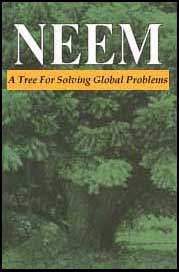
Forward[edit | edit source]
The people of India have long revered the neem tree (Azadirachta indica). For centuries, millions have cleaned their teeth with neem twigs, smeared skin disorders with neem-leaf juice, taken neem tea as a tonic, and placed neem leaves in their beds, books, grain bins, cupboards, and closets to keep away troublesome bugs. The tree has relieved so many different pains, fevers, infections, and other complaints that it has been called "the village pharmacy."
To those millions in India neem has miraculous powers, and now scientists around the world are beginning to think they may be right. Two decades of research have revealed promising results in so many disciplines that this obscure species may be of enormous benefit to countries both poor and rich. Even some of the most cautious researchers are saying that "neem deserves to be called a wonder plant."
In particular, neem may be the harbinger of a new generation of "soft" pesticides that will allow people to protect crops in benign ways.
Although apparently justified by the evidence, the rising enthusiasm is based largely on exploratory investigations rather than controlled experiments or the widespread use of neem products in modern practice. The results have seldom, if ever, been subjected to the rigors of independent evaluation or use. Once that happens, everything may change.
Despite all the uncertainties, however, the possibilities are indeed intriguing. The following chapter, a composite of the visions of various researchers involved with neem, shows why.
Noel Vietmeyer
Study, Director